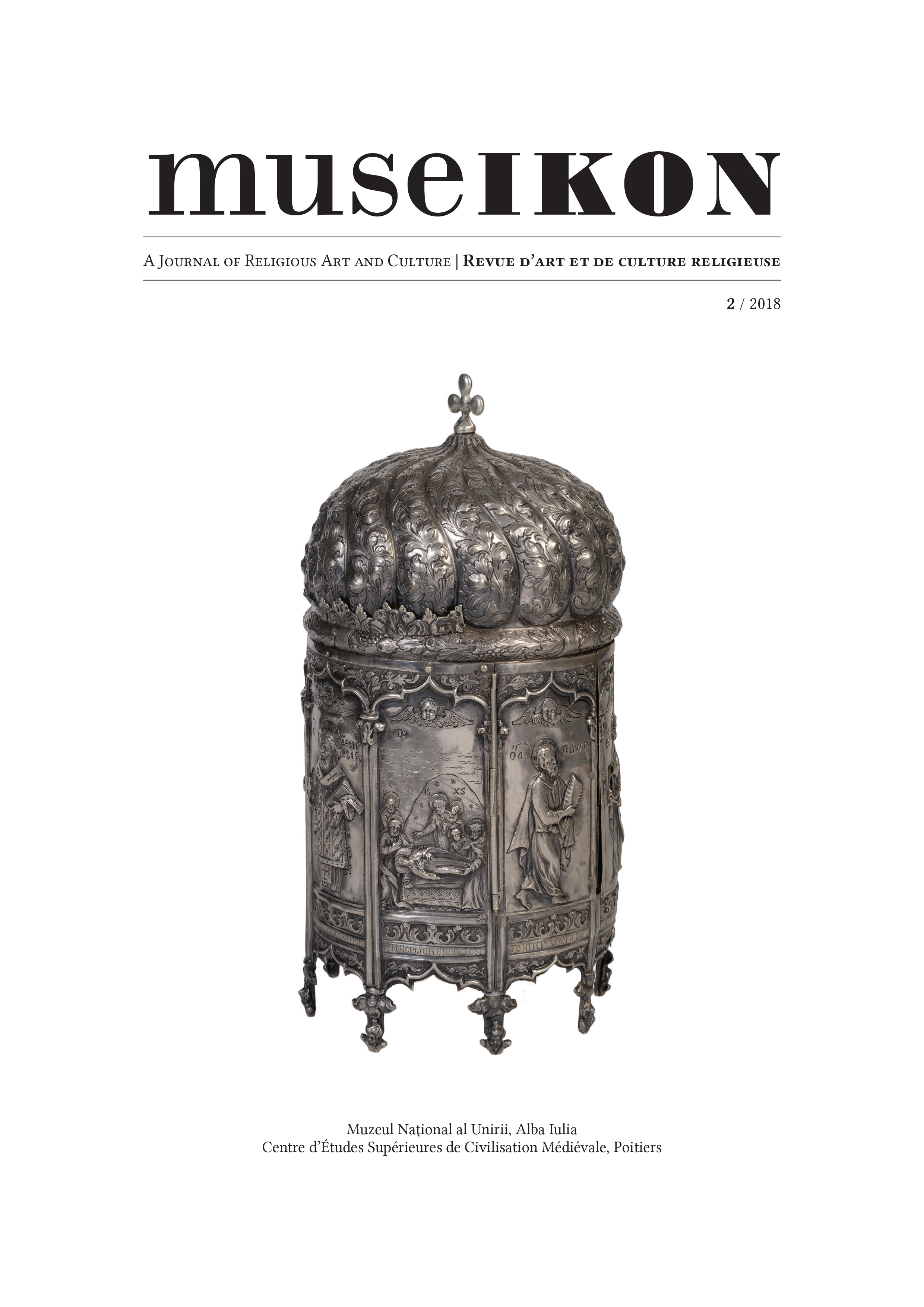
We kindly inform you that, as long as the subject affiliation of our 300.000+ articles is in progress, you might get unsufficient or no results on your third level or second level search. In this case, please broaden your search criteria.

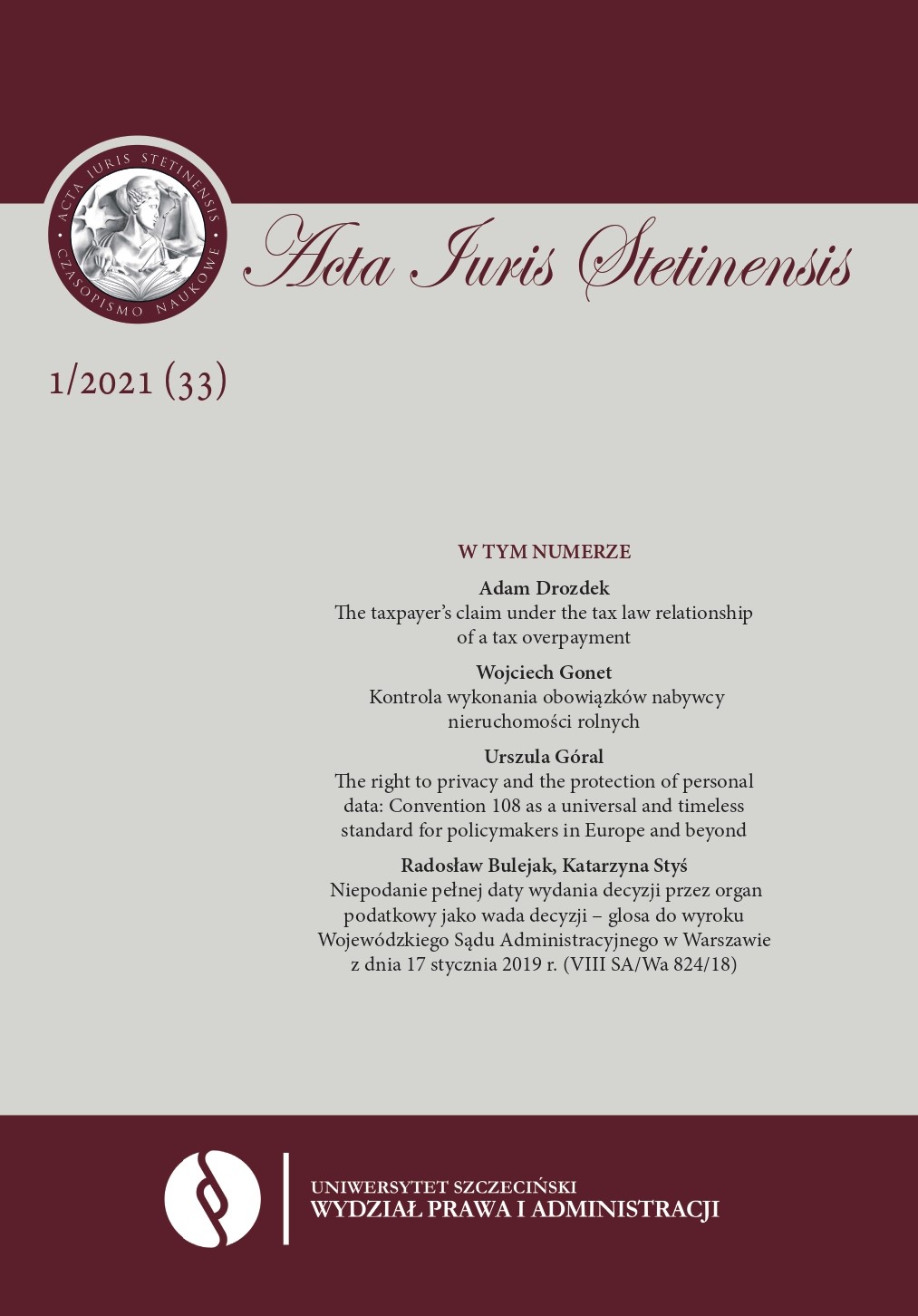
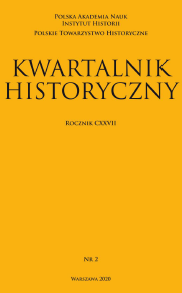
Silver as coins, jewellery and other items was between the eighth and twelfth centuries one of the most important noble metals in Europe, with different functions, both economic and symbolic ones. One of its manifestations was, in some places, burying silver items underground. The reviewed book is devoted to research into the role played by silver in the process of formation of the Piast State.
More...
A biography of Captain Romuald Rajs aka Bury by Michał Ostapiuk describes the life of one of the members of the Polish Home Army Wilno (Vilnius) Underground under the German occupation who, after the war, continued military operations in the Białystok Region. Bury fought, first, in the ranks of the Fifth Wilno Brigade of the Home Army, and then in the Third National Military Union Brigade. In 1948, Capt. Rajs was executed after being sentenced to death by a Military District Court.
More...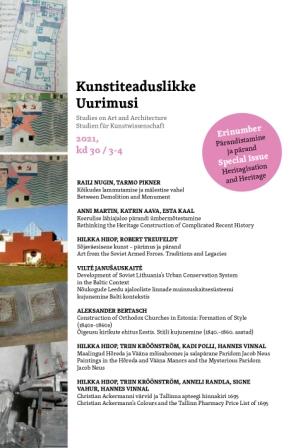
Ingrid Ruudi. Spaces of the Interregnum. Transformations in Estonian Architecture and Art 1986–1994. Dissertationes Academiae Artium Estoniae 31. Tallinn: Eesti Kunstiakadeemia, 2020, 292 lk. (Triin Ojari)
More...
Christian Ackermann. Tallinna Pheidias, ülbe ja andekas. Kuraatorid Hilkka Hiiop ja Tiina-Mall Kreem. Näitus Niguliste muuseumis 6. XI 2020 – 9. V 2021. Tiina-Mall Kreem, Triin Kröönström, Isabel Aaso-Zahradnikova, Hilkka Hiiop, Anneli Randla, Christian Ackermann. Tallinna Pheidias, ülbe ja andekas. Tallinn: Eesti Kunstiakadeemia, Tallinna Linnaarhiiv, 2020, 512 lk. (Johanna Jolen Kuzmenko)
More...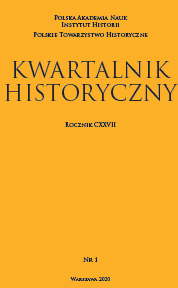
The works under review here are impressive examples of popular history informed by cutting-edge academic research, yet they fail to overcome the limitations resulting from acceptance of normative schemes of nation and empire building. They should be read, first and foremost, as polemical interventions that cannot be separated from the political context of the present Russo-Ukrainian conflict.
More...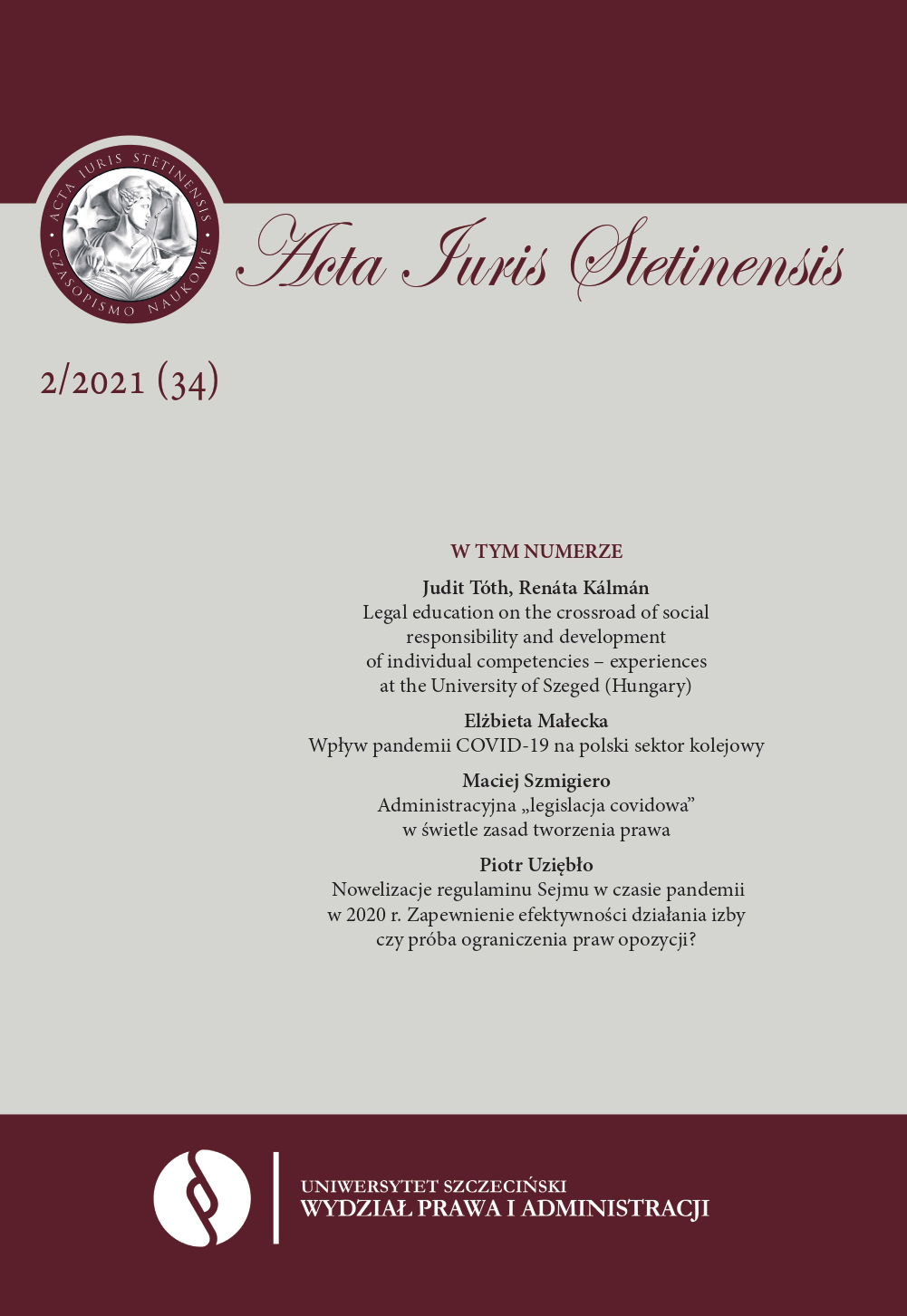
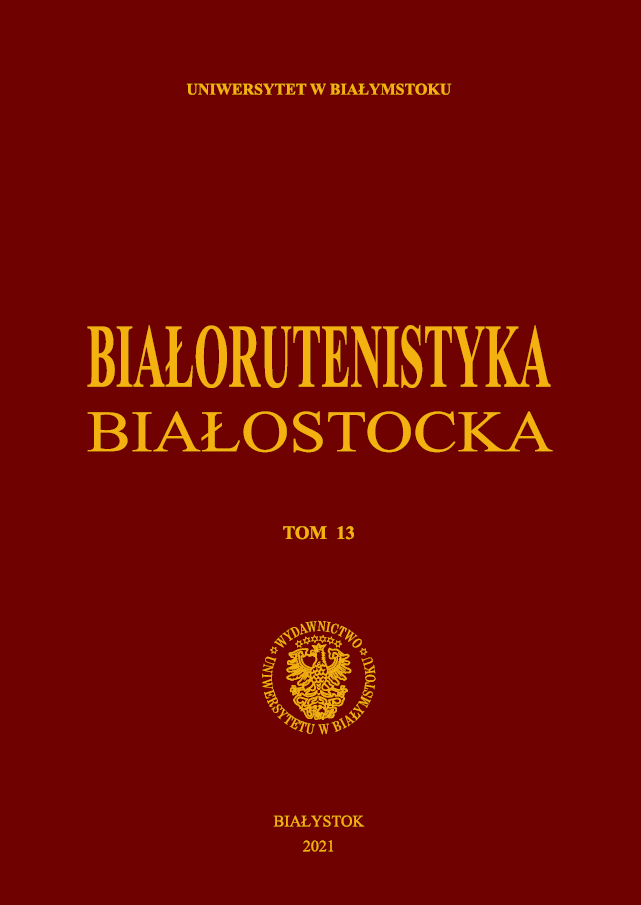
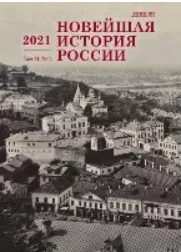
This essay explores Joan Neuberger’s book This Thing of Darkness (Cornell University Press, 2019) as a work of cultural history. It praises Neuberger’s use of cultural-historical practices such as the history of mentalités and the study of reception to illuminate Sergei Eisenstein’s artistic process and his subjectivity during the creation of Ivan the Terrible. Neuberger’s work also illuminates the mentalités of the Soviet arts establishment seeking to restrain Eisenstein and keep him in line with Soviet cultural norms. Neuberger convincingly argues that Ivan the Terrible is a subversive critique of Stalin and Stalinism and she demonstrates that Eisenstein was able to assimilate to Soviet society while simultaneously criticizing Soviet power. It remains doubtful, however, whether Soviet audiences understood Eisenstein’s cinematically complex critique. One aspect of the film’s context, however, that might be explored even further is the effect of the cataclysm of the Second World War on the making of Ivan the Terrible. Neuberger addresses Eisenstein’s grief at the loss of friends and the immense difficulties of creating a film after being evacuated, but author wonders whether the intense violence of the film reflects, in some way, Eisenstein’s perceptions of the war. The strength of this book is that it operates on so many different levels of analysis, and while the war is not as fully fleshed out as it might be, this fact does not take away from Neuberger’s mastery of Eisenstein’s milieu.
More...
This essay praises Joan Neuberger’s book This Thing of Darkness (Cornell University Press, 2019) as a great accomplishment in cinematic interpretation and a detailed and subtle historical account. It contests Neuberger’s argument that Eisenstein’s Ivan the Terrible films present an unequivocal critique of Stalin and Stalinism by means of a historical analogy with Ivan. Platt argues that the films are intentionally, stubbornly ambivalent in their representation of Ivan, and by extension Stalin. He contends that although this was indeed a subversive movie in the Stalinist USSR, Eisenstein’s films did not offer any finalized conception of the historical role of these figures, and instead should be viewed as works that thematize the impossibility of achieving certainty in historical interpretation. In reading Neuberger’s This Thing of Darkness, one feels the urgency of the author’s efforts to prove that Eisenstein offered an unequivocal, “radical” and “subversive” denunciation of Stalin and the social violence of his era — one that accords with our own rejection of the Stalinist legacy. Author sympathizes with this effort, but it is misguided. Considered in his own social context, one cannot but appreciate Eisenstein’s bravery in articulating a different, but no less subversive position: as seen through the lens of Ivan the Terrible, Stalinist Russia was revealed to be incomplete, charged with contradictions that made it impossible to come to conclusions concerning the meaning of events.
More...
The note is about the place of Joan Neuberger’s monograph among books on Eisenstein’s Ivan the Terrible, and, more broadly, among writings on period films, be they by film historians or by historians proper. The book is a triple portrayal — of Eisenstein, his Ivan, and, indirectly, of Stalin, whose favorite pastime was to use historical novels, plays, and films on Russia’s historic tyrants as one might a vanity mirror. The virtue of Neuberger’s approach is that, rather than judge or define, she successfully captures the ambiguity of each of her three protagonists. It is as much an analysis of the movie as an ambivalent mirror as it is of the person that holds it and of the one who expects to see in it a flattering reflection of himself — to no avail. Instead of assuming a bird’s eye point of view on the Soviet film-land, Neuberger nose-dove into it like a kid-loving pelican, picked one film and brought it to us in a big beak of a book. That is not to portray Joan Neuberger as a shape-shifter, a historian-turned-film-scholar. Yes, film scholars do write book-length studies on a single movie while political historians rarely do, but the choice of this specific format does not turn Neuberger into a film scholar. There is a lot of superb film scholarship to be found here, but the stunt that makes Neuberger’s scholarship unique is that, for all its film-scholarship lenses, it remains a historical study par excellence.
More...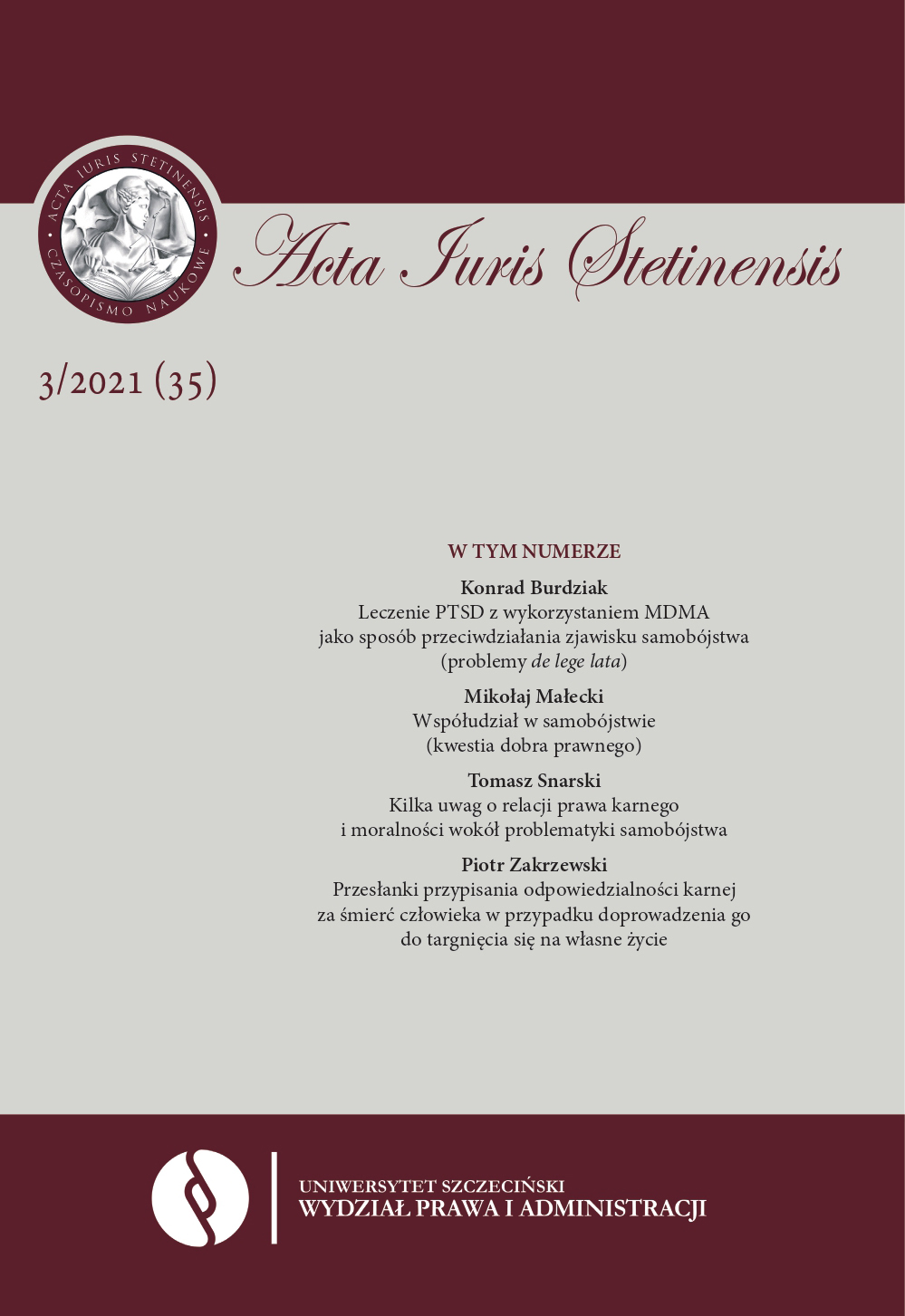
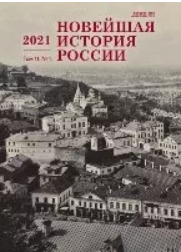
Many professional historians have viewed measures undertaken to celebrate anniversaries of historical events with scepticism. Celebrations connected to memorable dates are often pompous: coffee-table books released for this or that anniversary are frequently official in character, and their scholarly level is not high. Jubilee events often lack an element of discussion, even though, as is well known, the truth is often born out precisely in the clash of opinions.
More...
This article focuses on a newly discovered military history: the monograph The Defeat of Kolchak, authored by famous Soviet military leader General Alexander N. Bogolyubov. Published in 1939 by the General Staff Academy of the Workers’ and Peasants’ Red Army, this book was one of the first full-fledged special works focused on an analysis of military operations on the Eastern front during the Russian Civil War. Due to a number of circumstances, Bogolyubov’s printed work has not been in circulation until today, and has remained an unknown variable for Russian historical science. The book is considered in two dimensions: as a typical creative phenomenon of the Stalin era, with its characteristic request for a uniform, unified interpretation of the events of 1917–1922; as a special phenomenon in the official activities of Bogolyubov, who, despite his personal aspirations and desires, was forced to turn to scientific and teaching work at the General Staff Academy of the Workers’ and Peasants’ Red Army. Consideration of the set of issues associated with a previously unknown book helped the author come to the following conclusions: in the scientific sense, the work of Bogolyubov appears to be an important phenomenon in the early historiography of the Civil War, certain expressions of the book to this day retain their relevance and novelty; the fact of the presence of the mass of controversial theses and obvious mistakes in the work is a reflection of the ideological attitudes and stereotypical approaches to the interpretation of the events of the war that prevailed in historiography in the 1930s; the creative way of the monograph was directly attributable to the development of official activities of its author, reflects the varieties of fortune of General Bogolyubov.
More...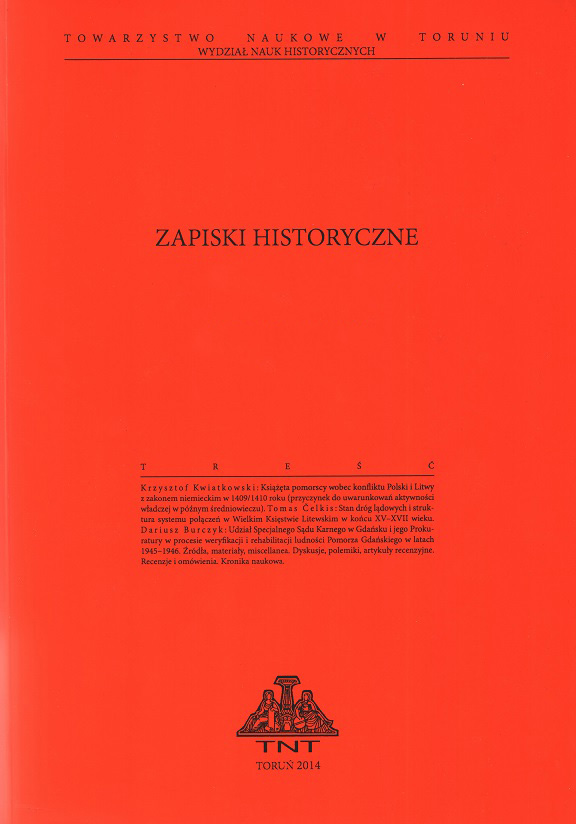
The discussion article provides an analysis of a book recently published by Wojciech Krawczuk entitled Records and Regesta of the German Expedition of the Royal Swedish Chancery of King Sigismund III of the Years 1597–1600. The book contains a source edition of the minutes of the royal chancery of Sigismund III Vasa, King of Poland, Grand Duke of Lithuania (1587–1632), and King of Sweden (he retained power in 1592–1599), written around 1600, which has been supplemented by extensive regesta prepared by the editor. This discussion article evaluates this form of providing access to the contents of primary sources against the background of similar source editions consisting of records created by other royal chanceries, namely the chancery of the Kingdom of Poland, the chancery of the Grand Duchy of Lithuania and the chancery of the dukes of Mazovia. It is noteworthy that increasingly more archival materials are made available online through the websites of various archives and other institutions that preserve historical documents. In view of the growing trend to digitalize primary sources and make them available online, the idea of publishing complete source editions including full source texts, which began at the beginning of the twentieth century, seems unjustified nowadays. Currently, the solution proposed by Wojciech Krawczuk, based on the publication of regesta, appears to be the most favourable. Perhaps it would be appropriate to link the published regesta even more closely to the digitized archival materials by providing each one of them with a link or QR code that would refer to the website hosting the relevant digitalized source. The content of the documents included in the reviewed book differs significantly from the content of the records created by the chanceries of the Kingdom of Poland and the Grand Duchy of Lithuania. Swedish documents are dominated by current affairs, primarily concerning military and diplomatic issues, and include much fewer normative acts, such as appointments to offices and bestowals of landed property.
More...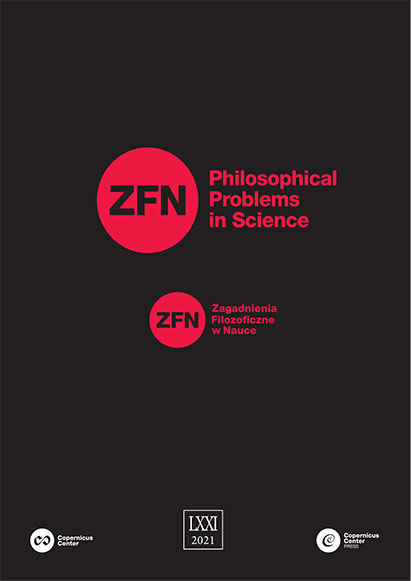
We live in extraordinary times for cosmologists. A vast amount of new astronomical data is pushing our model of the universe to its limits. An interest in cosmology is growing. The Little Book of Cosmology by Lyman Page offers a concise, up-to-date, and comprehensible introduction to the subject.
More...
This review article presents an important, newly published study of Popper’s critical method by Zbigniew Liana. The review emphasizes the very high level of the study, points to its originality, and explains why the book is recommended mainly to specialists of Popper’s thought. It is also explained how the book manages to contain so many original and valuable analyses in a small volume.
More...
This article is a review of Frans de Waal’s book Mama’s Lust Hugs. Animal Emotions and what They Tell Us about Ourselves, which was released in Polish in 2019. The book deals with the problem of animal emotionality. One of the author’s conclusions, which is underlined in the review, is that that there is no such thing as unique human emotions that animals would not have. Emotions are universal; they are shared by both humans and animals. Although the book is intriguing, it does not contain anything new in terms of content, as it deals with the topics that de Waal has previously addressed in his writings. The publication, on the other hand, can be an excellent starting point for reflection not just on animals (their emotionality and rights), but also on people and their place in the world, thanks to collecting and integrating topics relating to animal emotionality into a single book. It confronts the reader with the issue of human nature. As a result, as this review attempts to demonstrate, Frans de Waal’s book is an excellent example of how scientific issues lead to philosophical insights.
More...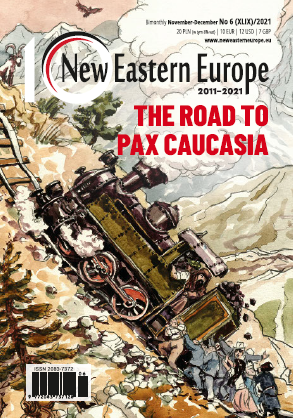
The murder of Gongadze: 20 years of searching for the truth. A documentary film produced by the Public Interest Journalism Lab.
More...